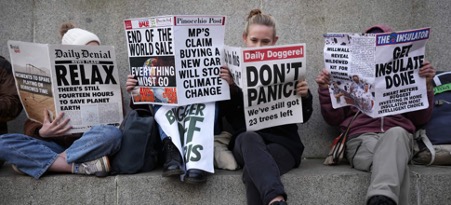
I don’t know if I’m on my own, but I have found it hard to keep up with the COP conference. I worry that it is so complicated that most people will just switch off. However, over the next few weeks we will link up with several the writers from New Zealand and around the world who will give us a summary of what we must do to play our part toward addressing global warming.
Over the week here are a few snippets which I read:
First is one of our own young delegates at the conference:
Here’s what Voices for the Future NZ representative Sophie Handford said in Glasgow:
Nāu te rourou, nāku te rourou, ka ora ai te iwi. With your food basket and my food basket, the people will thrive. Let’s bring our baskets together, to speak and act for the outcomes our people and planet so desperately need.
Here’s a demonstration by Extinction Rebellion outside the Glasgow gathering:

Which companies are polluters despite subsidies:
In an article in Newsroom during the week which companies received subsidies was studied. It was reported:
The greatest over-subsidy goes to the Tiwai Point aluminium smelter, which received 1.5 million credits from the Government in 2020 but which emitted just 637,000 tonnes in the year to June. Part of Tiwai’s allocation comes because of its massive electricity usage – major users of electricity get carbon credits to help defray the added power charges when fossil fuel generators need to purchase their own credits. But Tiwai has a unique contract paying well below the market price for its electricity, meaning it pockets nearly a million excess credits from the Government.
At current spot prices, that’s nearly $60 million in subsidies.https://www.newsroom.co.nz/pro/revealed-new-zealands-worst-climate-polluters
Just 15 companies responsible for three quarters of NZ’s emissions… Link
Can 3.5 Percent Save the Planet?
Environmental movements have shifted public awareness about climate change. How many more people will need to join them for their demands to be met?
A major question facing today’s climate movement is what critical mass is required to compel governments to take its demands more seriously. If millions of people aren’t enough to pressure leaders to take drastic and enforceable action on climate change, how many are? And what will it take for others to be moved to join them?
There isn’t a magic figure guaranteed to tip the balance in favor of widespread climate mitigation, of course. But some environmental campaigners have worked with a particular number in mind: 3.5 percent. This comes from the work of the political scientist Erica Chenoweth, whose research found that nonviolent movements require the active participation of at least 3.5 percent of a population in order to achieve serious political change. This so-called 3.5 percent rule was derived from Chenoweth’s study of hundreds of protests from 1900 to 2006, and has made an impact on contemporary movements, including Extinction Rebellion, an international climate-advocacy group based in London whose founders cite Chenoweth as a source of inspiration (the group publicly states that it needs the involvement of 2 million people, or roughly 3.5 percent of the British population, in order to succeed).
When I interviewed Chenoweth last year, they explained their findings in a more matter-of-fact way: Nonviolent protests are more successful than their violent counterparts because they are better at eliciting broad and diverse support from the societies in which they take place. This makes these movements more inclusive, and also more innovative. These kinds of protests don’t necessarily succeed because they appeal to the morality of those in power, but rather because they effectively constrain a government’s options by undermining its support in various pillars of society, such as bureaucrats, the media, and business elites. If 3.5 percent of a country’s—or the world’s—population backs any one issue or policy proposal, that is a substantial enough voting bloc, consumer market, and workforce to get those in power to pay attention.
Mark Belton wrote:
NZ’s COP26 commitment to ramp up our emissions reduction target from 30% to 50% by 2030 is a fraud, being based on purchasing international carbon offsets. It does zero for global GHG reductions, a sleight of hand that shames us. Tradable units of integrity and in quantity are yet to be developed, and when presented, buyer beware, the offerings will be covered with flashing red lights. NZ has a history of being a carbon cheat, having enabled offsets from Russia and Ukraine to flood our carbon markets. These cheat units remain on our books. In the challenge ahead it is imperative work is real, not delusionary. In emission reduction work, nothing is useful unless it is honest (real). Nihil Utile Quad Non Honestum. Journalists have the front-line task of scrutinising our efforts and keeping us honest. If perchance genuine offsets are created in poor developing nations, they should be on their books of achievement, not laundered into NZ’s carbon accounts in an attempt to cover-up our failings.
https://www.scoop.co.nz/stories/PO2110/S00273/rising-to-the–challenge-a-ministry-of-green-works-for-aotearoa.htm
Leave a Reply